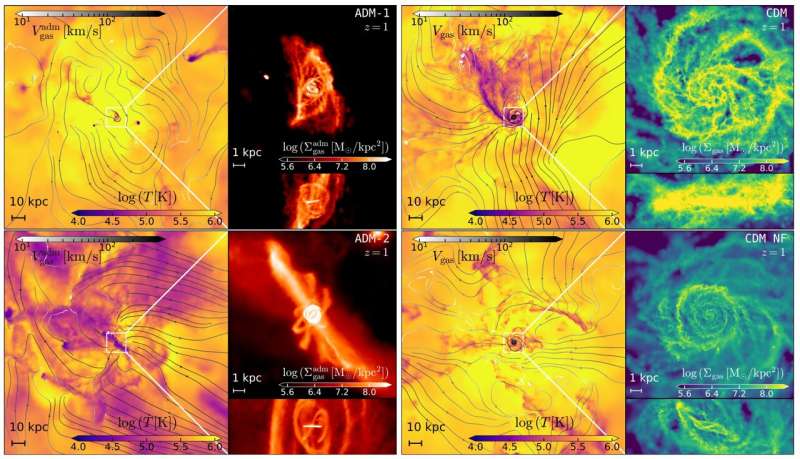Dark matter can make dark atoms, say theoretical astrophysicists

A team of theoretical astrophysicists have studied in detail a hypothetical form of dark matter that combines to form dark atoms. They found that the existence of dark atoms can drastically affect the evolution of galaxies.
We don’t understand the vast majority of matter in the universe. We call it dark matter, but that’s about the best we’ve got. To the best of our knowledge dark matter is composed of some new kind of particle currently unknown to modern physics. Whatever the particle is, it does not interact with light and it does not interact with normal matter except through the gravitational force.
Given our lack of understanding of this mysterious substance, we have a lot of room to play with in our theoretical models. Some of these models suggest that dark matter isn’t made of a single species of particle that floods the universe. Instead it can be composed of different many different kinds of particles. There can also be new forces of nature, beyond the four that we are familiar with, that operate only among the dark matter particles.
In this picture the various components of dark matter can collect together to form dark atoms, and even molecules and more complex structures. Most importantly, in these models the dark matter can clump together very tightly. A team of researchers used this fact to explore the observational consequences of these models of dark atoms using simulations of the evolution of galaxies.
They found that atomic dark matter can very rapidly clump up, forting forming a “shadow disk” to go along with the disk of stars in the typical galaxy. From there the dark atoms continue to clump, forming the equivalent of dark stars and dark black holes. It can even quickly sink into the core of the galaxy, rapidly increasing the density there.
All of these effects of atomic dark matter would be invisible at cosmological scales. But they would drastically affect the evolution of stars within the galaxy. Stars form from the collapse of material, and any gravitational influence can affect the trajectory of star formation.
The researchers found differences in star formation rates and the population and distribution of stars in a galaxy that includes dark atoms versus a galaxy that only includes a single dark matter component. The researchers hope that these results will be useful to further pinning down this mysterious substance that dominates our universe.
The research is published on the arXiv preprint server.
More information:
Sandip Roy et al, Simulating Atomic Dark Matter in Milky Way Analogues, arXiv (2023). DOI: 10.48550/arxiv.2304.09878
Citation:
Dark matter can make dark atoms, say theoretical astrophysicists (2023, May 12)
retrieved 12 May 2023
from https://phys.org/news/2023-05-dark-atoms-theoretical-astrophysicists.html
This document is subject to copyright. Apart from any fair dealing for the purpose of private study or research, no
part may be reproduced without the written permission. The content is provided for information purposes only.
For all the latest Science News Click Here
For the latest news and updates, follow us on Google News.

